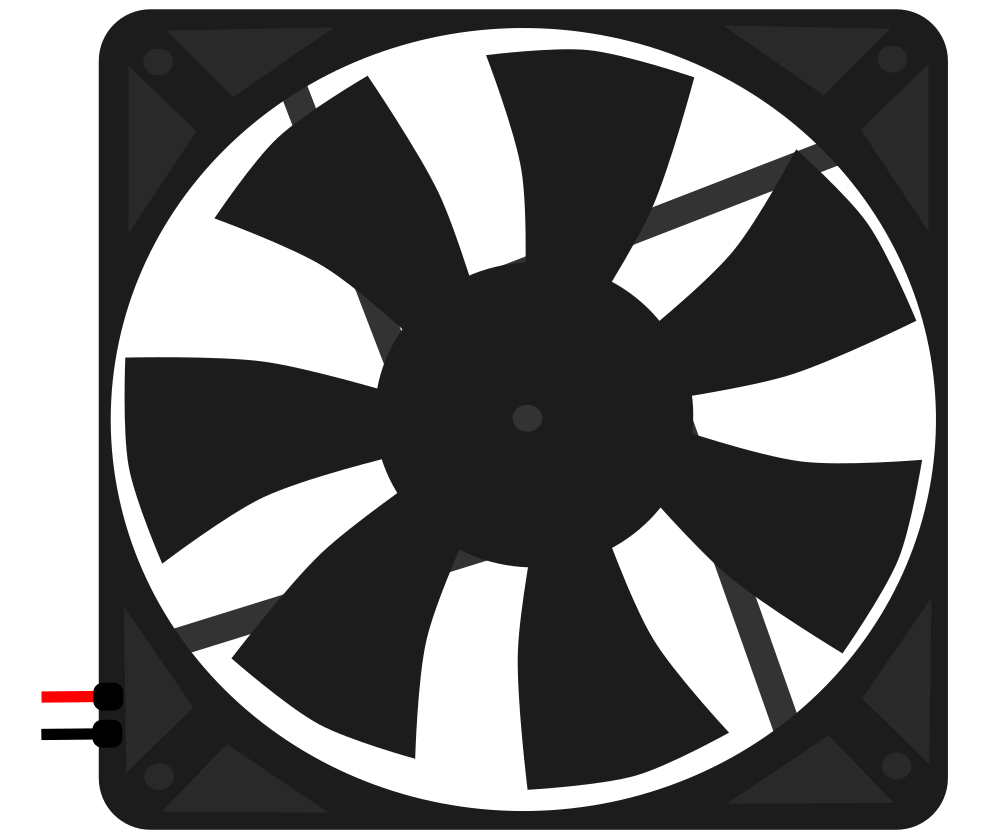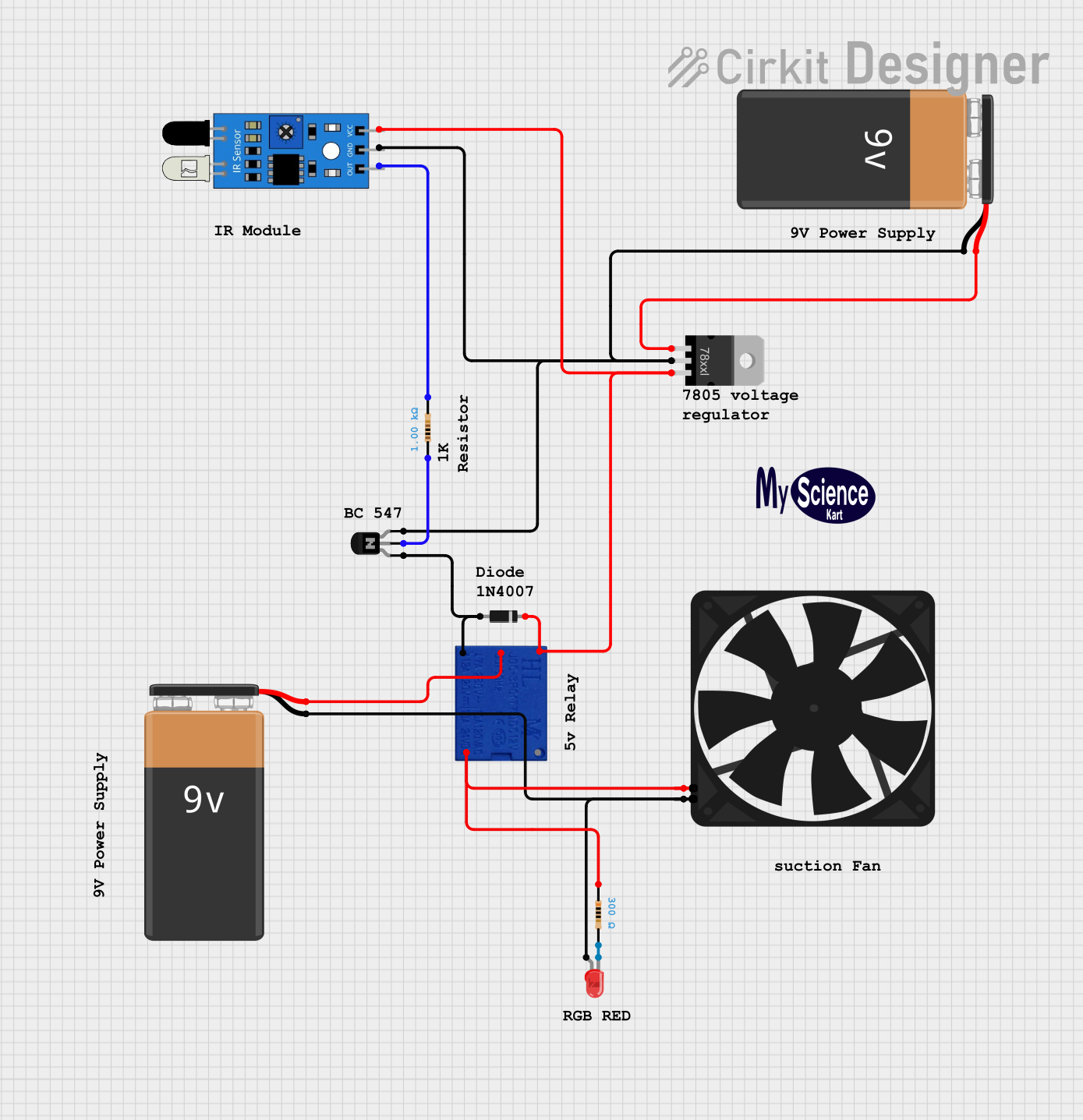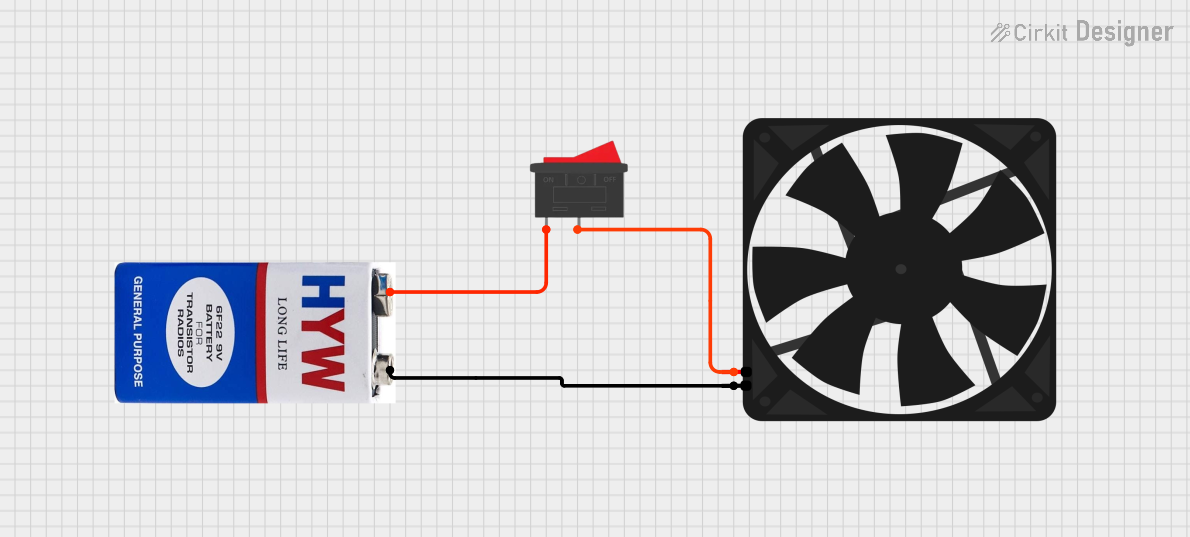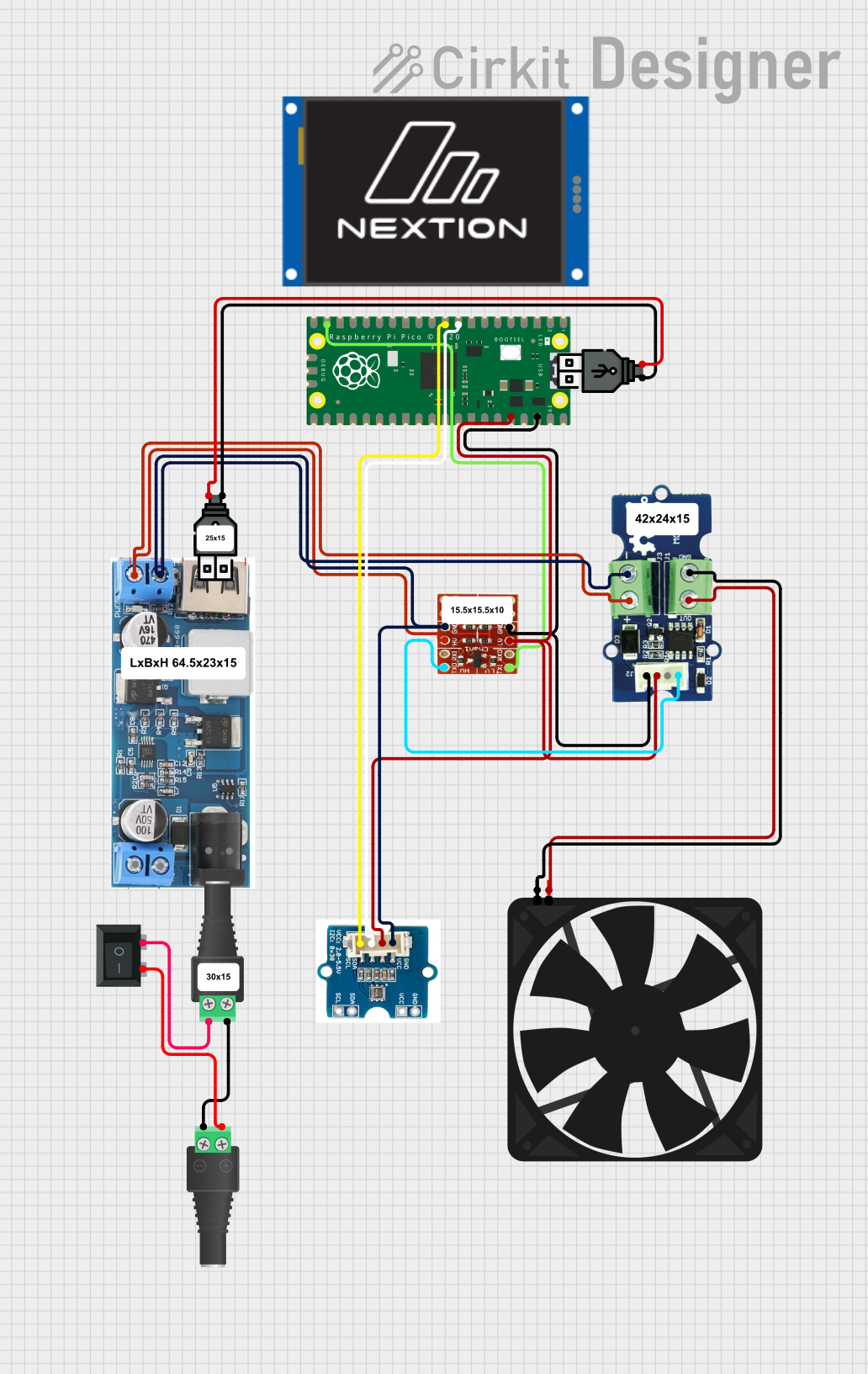
How to Use Fan: Examples, Pinouts, and Specs

 Design with Fan in Cirkit Designer
Design with Fan in Cirkit DesignerIntroduction
A fan is a device that creates airflow by rotating blades, commonly used for cooling or ventilation in electronic circuits. It helps dissipate heat generated by components such as processors, power supplies, or other heat-sensitive devices, ensuring optimal performance and preventing overheating. Fans are widely used in computers, power electronics, and industrial equipment.
Explore Projects Built with Fan

 Open Project in Cirkit Designer
Open Project in Cirkit Designer
 Open Project in Cirkit Designer
Open Project in Cirkit Designer
 Open Project in Cirkit Designer
Open Project in Cirkit Designer
 Open Project in Cirkit Designer
Open Project in Cirkit DesignerExplore Projects Built with Fan

 Open Project in Cirkit Designer
Open Project in Cirkit Designer
 Open Project in Cirkit Designer
Open Project in Cirkit Designer
 Open Project in Cirkit Designer
Open Project in Cirkit Designer
 Open Project in Cirkit Designer
Open Project in Cirkit DesignerTechnical Specifications
Below are the general technical specifications for a standard DC cooling fan:
| Parameter | Value |
|---|---|
| Operating Voltage | 5V, 12V, or 24V (depending on model) |
| Current Consumption | 0.1A to 0.5A |
| Power Rating | 0.5W to 5W |
| Speed | 1000 to 5000 RPM |
| Airflow | 10 to 100 CFM (Cubic Feet per Minute) |
| Noise Level | 20 to 40 dBA |
| Connector Type | 2-pin, 3-pin, or 4-pin |
| Dimensions | 40x40mm, 80x80mm, 120x120mm, etc. |
| Bearing Type | Sleeve or Ball Bearing |
Pin Configuration
The pin configuration for a 3-pin and 4-pin fan is as follows:
3-Pin Fan
| Pin | Name | Description |
|---|---|---|
| 1 | GND | Ground connection |
| 2 | VCC | Power supply (e.g., 12V) |
| 3 | Tachometer | Outputs a signal for speed monitoring |
4-Pin Fan
| Pin | Name | Description |
|---|---|---|
| 1 | GND | Ground connection |
| 2 | VCC | Power supply (e.g., 12V) |
| 3 | Tachometer | Outputs a signal for speed monitoring |
| 4 | PWM | Pulse Width Modulation for speed control |
Usage Instructions
How to Use the Fan in a Circuit
- Power Connection: Connect the fan's VCC pin to the appropriate voltage source (e.g., 12V) and the GND pin to the ground of the circuit.
- Speed Monitoring (Optional): If using a 3-pin or 4-pin fan, connect the Tachometer pin to a microcontroller or monitoring circuit to measure the fan's speed.
- Speed Control (Optional): For 4-pin fans, connect the PWM pin to a microcontroller or PWM signal generator to control the fan's speed.
Important Considerations
- Voltage Compatibility: Ensure the fan's operating voltage matches the power supply in your circuit.
- Current Rating: Verify that the power supply can provide sufficient current for the fan.
- Orientation: Install the fan in the correct orientation to direct airflow as needed.
- Noise: Choose a fan with an appropriate noise level for your application.
- Heat Dissipation: Ensure the fan is placed near heat-generating components for effective cooling.
Example: Connecting a 4-Pin Fan to an Arduino UNO
Below is an example of how to control a 4-pin fan using an Arduino UNO and PWM:
// Example: Controlling a 4-pin fan with Arduino UNO
// Connect the fan's PWM pin to Arduino pin 9
// Connect the fan's VCC and GND to a 12V power supply
// Use a common ground between the Arduino and the fan
const int fanPWM = 9; // PWM pin connected to the fan's PWM input
void setup() {
pinMode(fanPWM, OUTPUT); // Set the PWM pin as an output
}
void loop() {
// Set fan speed to 50% (128 out of 255)
analogWrite(fanPWM, 128);
delay(5000); // Run at 50% speed for 5 seconds
// Set fan speed to 100% (255 out of 255)
analogWrite(fanPWM, 255);
delay(5000); // Run at full speed for 5 seconds
}
Troubleshooting and FAQs
Common Issues
Fan Not Spinning:
- Cause: Incorrect voltage or loose connections.
- Solution: Verify the power supply voltage and ensure all connections are secure.
Fan Spins Slowly:
- Cause: Insufficient power or high PWM duty cycle.
- Solution: Check the power supply's current rating and increase the PWM duty cycle.
Excessive Noise:
- Cause: Worn-out bearings or improper mounting.
- Solution: Replace the fan or ensure it is securely mounted.
No Speed Signal from Tachometer:
- Cause: Tachometer pin not connected or incompatible circuit.
- Solution: Verify the connection and ensure the monitoring circuit is compatible.
FAQs
Can I use a 12V fan with a 5V power supply?
- No, a 12V fan requires a 12V power supply to operate correctly. Using a lower voltage may prevent the fan from spinning or reduce its performance.
How do I reduce fan noise?
- Use a fan with a lower RPM or implement PWM control to reduce the speed.
Can I connect a fan directly to an Arduino?
- No, most fans require more current than an Arduino can supply. Use an external power source and a transistor or MOSFET for control.
What is the purpose of the PWM pin on a 4-pin fan?
- The PWM pin allows precise speed control by varying the duty cycle of the input signal.